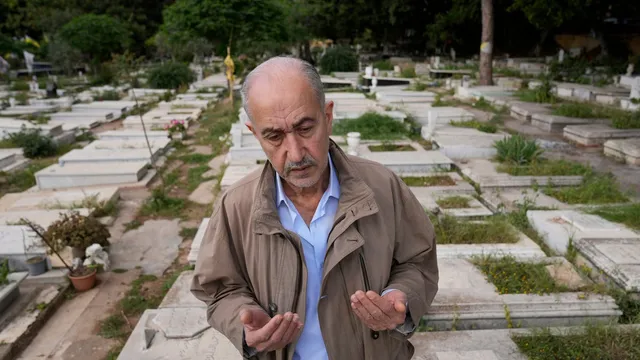
Twenty-two killed in bus attack that ignited Lebanon's civil war
2025-04-13 05:23- On April 13, 1975, a bus carrying Palestinian students and militants was attacked in Beirut, resulting in 22 deaths.
- The attack was rooted in escalating tensions between Palestinian factions and Lebanese Christian militias.
- This tragic event marked the beginning of a lengthy and brutal civil war in Lebanon.
Express your sentiment!
Insights
On April 13, 1975, an incident in Beirut marked the beginning of a brutal civil war that lasted for 15 years. That fateful day saw a church inauguration attended by the Christian Phalange party leader, coinciding with a Palestinian military parade. Tensions escalated as various factions, particularly the Christian community and Palestinian militants, considered each other threats amidst rising violence. While unaware of earlier skirmishes between Palestinians and Phalange members, a bus carrying Palestinian students and militants was ambushed, resulting in 22 fatalities. The aftermath of this attack further deepened divisions within the conflicted Lebanese society and highlighted the weak authority of the state at that time. This incident was pivotal, not only in its immediate human toll but also in its long-term impact on Lebanon’s political landscape, setting off a chain reaction of violence and hostilities that defined the civil war period. Many Lebanese believed the attack was part of a larger, planned operation, although investigations suggested it may have been a chaotic reaction to the events surrounding Gemayel's bodyguard's earlier death, illustrating the fragility of both trust and peace in Lebanon. As the 50th anniversary of this tragic event approaches, the bus involved in the attack has been preserved and moved to a museum, serving as a haunting reminder of the violence that tore through the country.
Contexts
The civil war in Lebanon, which lasted from 1975 to 1990, was the result of a complex interplay of historical, social, and political factors. The roots of the conflict can be traced back to the early 20th century, when Lebanon's multi-sectarian society began to feel the pressures of nationalistic movements, colonial rule, and the impact of larger regional dynamics, particularly the influence of neighboring countries like Syria and the events surrounding the Arab-Israeli conflict. Lebanon was a mosaic of religious communities, including Maronite Christians, Sunni Muslims, Shia Muslims, and Druze, each vying for political power and influence. The fragility of the political system, which was based on a delicate confessional balance established by the National Pact of 1943, ultimately resulted in deep-seated tensions and the inability of various groups to coexist peacefully. The immediate triggers of the civil war included the rise of Palestinian armed groups in Lebanon following the 1967 Arab-Israeli war, which aggravated sectarian tensions and led to violent confrontations between armed factions. The presence of Palestinian refugees and their militias further polarized Lebanese society, as they were often seen as a threat by various Lebanese factions. During this time, the political landscape was also marked by a series of assassination attempts, escalating violence, and foreign interventions, including Syria's entry into Lebanon in 1976 under the auspices of the Arab League. These factors contributed to the erosion of state authority and the emergence of warlords, complicating the conflict and leading to fragmentation within society. As the war progressed, it drew in various external actors and factions, transforming into a multi-layered conflict that involved different regional and international interests. The rivalries between Syrian, Israeli, and Iranian influences over Lebanon intensified the fight, as groups such as Hezbollah emerged as key players in the ongoing struggles for power. The conflict was characterized by increasingly brutal episodes of violence, including sectarian massacres, forced displacements, and extensive urban destruction, particularly in Beirut. The Lebanese civil war was not a simple struggle for power but a battleground where various agendas clashed, leading to unimaginable human suffering and destabilization not only within Lebanon but across the region. The conclusion of the civil war came with the signing of the Taif Agreement in 1989, which aimed to bring about a political solution by redefining power sharing among Lebanon's sects and enabling the disarmament of militias. However, while the agreement ended the hostilities, it did not address the underlying issues that led to the war, such as economic inequalities and sectarian divisions. The aftermath of the civil war left Lebanon navigating a precarious path, as the legacy of violence, political corruption, and external manipulation continued to pose significant challenges to national reconciliation and unity. Understanding the causes of the Lebanese civil war is essential for grasping the complexities of Lebanon's current socio-political landscape and the ongoing struggles for stability in an ever-evolving regional context.